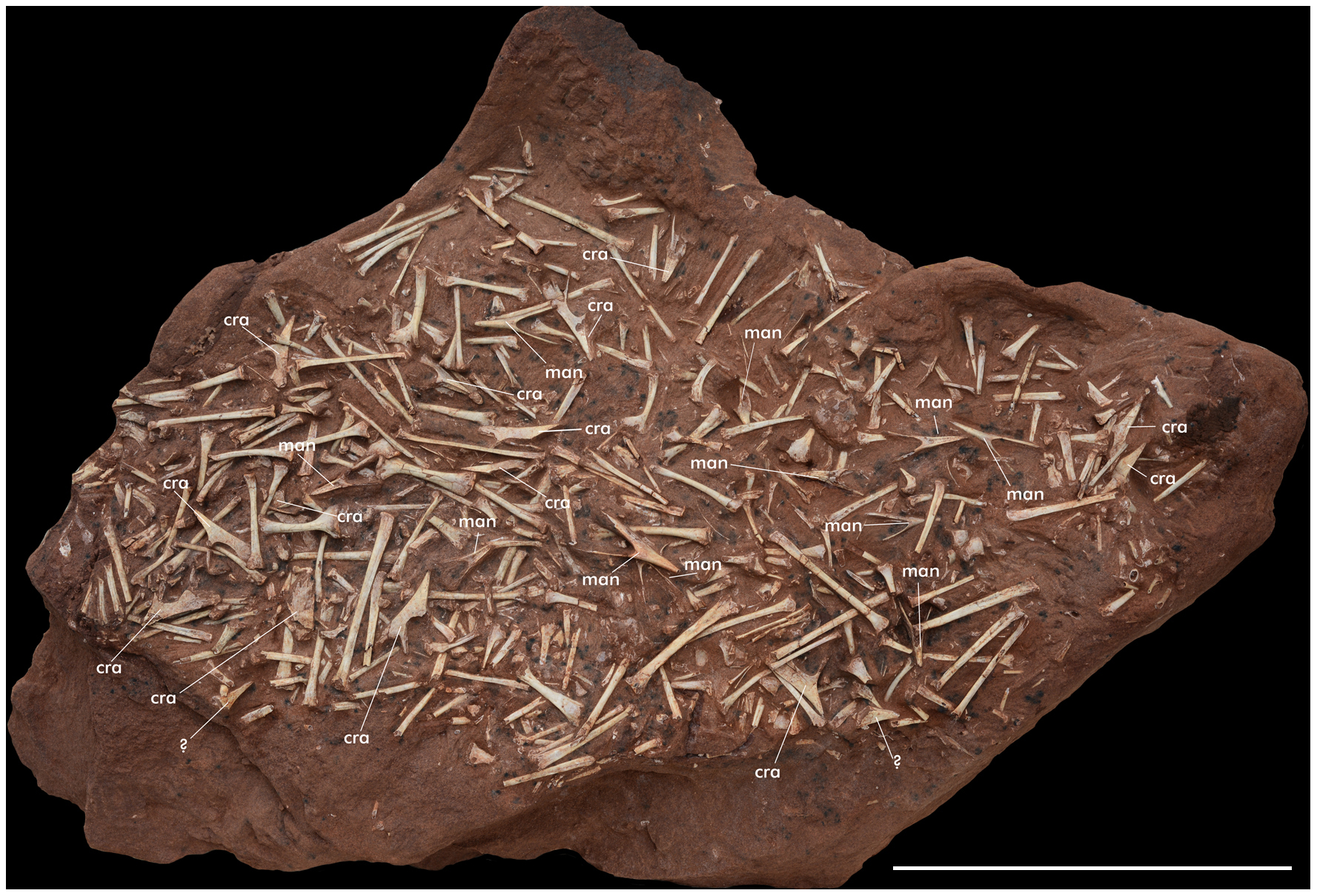Things That Make a Vertebrate Paleontologist Weep with Joy

There are times when I really wish I were born an invertebrate paleontologist. For many of them*, a few kilograms of rock can contain dozens or even hundreds of specimens of a single species. This is awesome, because some of the best science happens with large sample sizes. The more fossils you have, the easier it is to study variation within a single species, or track evolutionary change, or study the response of a species to changes in local environment and global climate. A single spectacular fossil offers a wealth of information, but a thousand spectacular fossils opens up the firehose of knowledge.
Why are so many invertebrate fossils so common, and thus so easily studied? For one, many invertebrates are fairly small. The smaller the organism, the less likely it is to get broken up by the various forces of nature, and the more likely you are to get a completely intact fossil. Additionally, some invertebrates include quite durable hard parts; thus, the fossil records of snails and clams and corals are pretty awesome. Vertebrate animals include hard parts too–but the complex, multi-jointed skeletons tend to get disassembled pretty quickly. If the skeletons are fragile, such as the hollow bones of flying reptiles (pterosaurs), the situation is even more dismal.
Thus, it is pretty special for paleontologists to find a new, large sample of a single species of extinct vertebrate. Last week, just this sort of announcement from Manzig and colleagues, published in PLOS ONE, caught the interest of the pterosaur community [full disclosure: I was the volunteer academic editor who handled this paper].

A locality in southern Brazil preserved the remains of at least 47 different individuals, all interpreted as belonging to a single species. They were found in at least four different (but closely spaced) layers of rock, with the bulk from two of the four layers. The researchers named the new animal Caiuajara dobruskii, reflecting both its geologic origins (within the Caiuá Group) and its discoverers (Alexandre Dobruski and his son João Dobruski). Caiuajara is distinguished from other pterosaurs by the unique shape of the bones forming its toothless beak, among other characteristics. If you were to see one alive, the most striking feature (after its giant leathery wings) would probably be a massive bony crest atop the skull.
Beyond the fact that pterosaurs are a pretty cool group of animals, and that Caiuajara represented an awesome-looking beastie, the sheer sample size takes one’s breath away. There are large and small individuals, presumably representing young and old alike. Although “only” 47 individuals have been unearthed so far, it is quite likely that hundreds more remain unexcavated at the same site. You don’t often get this kind of sample for any vertebrate animal, let alone one with such a delicate and easily broken skeleton. Indeed, the known bones of Caiuajara are quite three-dimensionally preserved. This is especially rare for pterosaurs, because their thin-walled bones tend to get smashed to roadkill-like oblivion.
Last week’s publication was only a preliminary report, primarily covering the basic description and naming of Caiuajara. Now, the hard work begins–excavating, cleaning, studying, and interpreting the entire sample in detail. We may have to wait awhile, but in the end I suspect this animal will be known better than just about any other pterosaur.

*It is a bit of a misconception that all invertebrate fossils are common, and that all vertebrate fossils are rare. However, the number of common invertebrate species far exceeds the number of common vertebrate species.
Citation
Manzig PC, Kellner AWA, Weinschütz LC, Fragoso CE, Vega CS, et al. (2014) Discovery of a rare pterosaur bone bed in a Cretaceous desert with insights on ontogeny and behavior of flying reptiles. PLoS ONE 9(8): e100005. doi:10.1371/journal.pone.0100005
